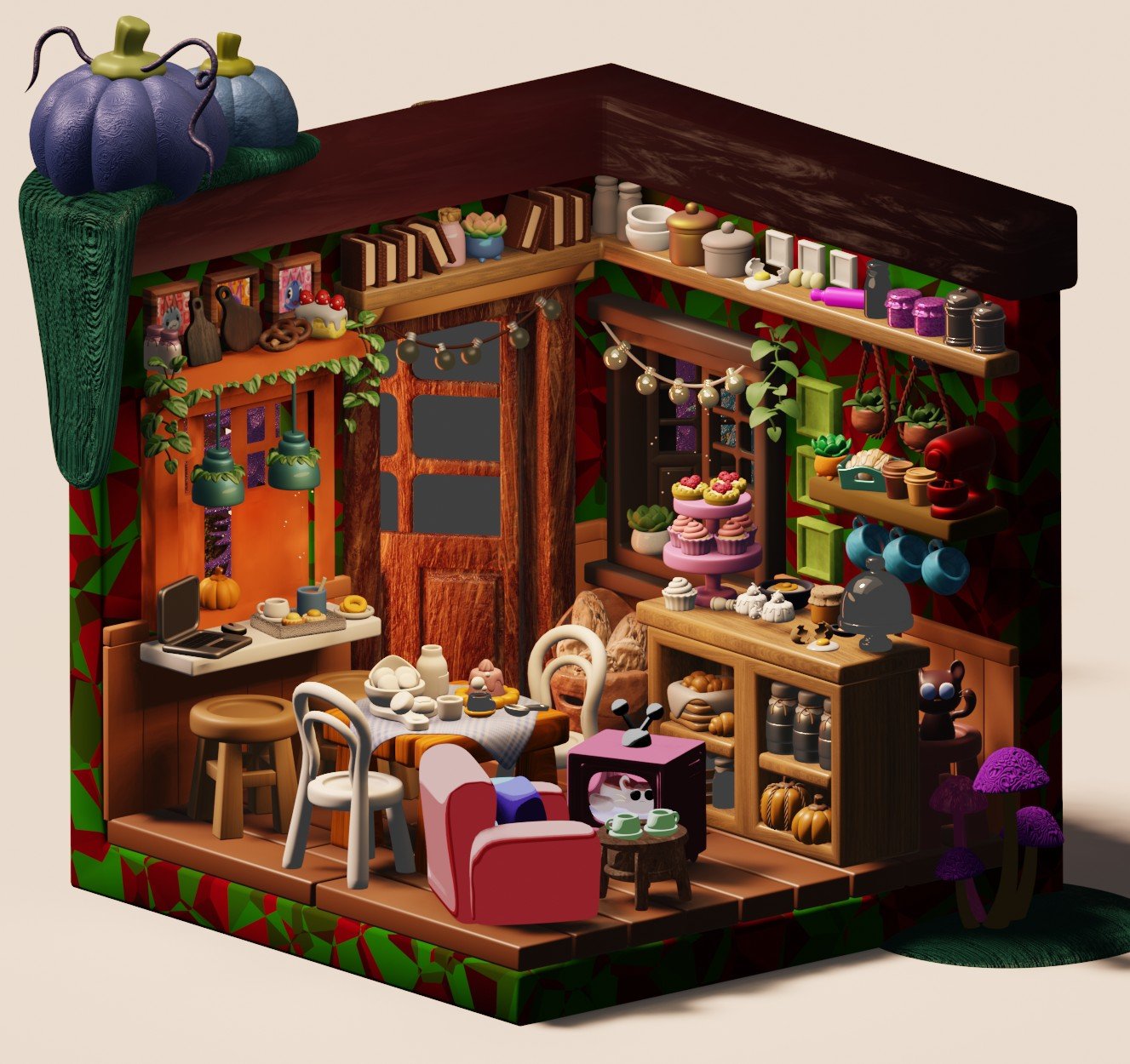DES 99/198
An introductory 3D modeling course
My team and I wanted to provide a course open to all students that would expose them to a variety of skills related to 3D computer graphics. We chose to teach the software, Blender 3D, because it is a well-supported free software with regular updates and a large community. This would allow our students to easily continue 3D modeling after graduation for their hobbies or careers.
As a standard quarter-long class at UC Davis, the course was divided into 10 weeks with 8 weeks covering 3D modeling, sculpting, character modeling, rigging and animation, procedural shading, image texturing, lighting, and rendering. The last 2 weeks were for students to dedicate to their final projects.
Da Vinci Charter High School
Prior to the DES 99/198 course, a local Davis high school reached out to a UC Davis student organization I help run, 3D Enthusiasts of Davis. They wanted us to partner with their Digital Media Arts program, imparting our knowledge of 3D modeling to students who lacked access to such resources.
After spending 3-4 months planning the contents of our collaboration, we decided to teach their Digital Media Arts class a 5-week-long Blender 3D introductory course. Our decisions for the course structure and schedule were made based off of the information from discussions with the school and participants from 3D Enthusiasts.
5 weeks of nearly daily instruction was enough time to introduce the students to 3D modeling, sculpting, materials, lighting, and rendering. Meanwhile, 5 weeks would not take up too much of my time and all the other tutors’s time. While teaching the high school students, we also had to manage our own schedules as full-time university students.
The culmination of our partnership were the final projects produced by the high school students using skills they learned from our instruction. This collaboration served as a trial run for a student-led course I and my partners wanted to implement at UC Davis.
We wanted to gain experience teaching and understand what ideas were feasible. The course structure was a smaller version of what we had in mind for DES 99/198 given that we had 10 weeks rather than 5 weeks for the latter. We refined and expanded the course documentation to fit the depth expected for a typical UC Davis Design course.
G-Beast Animation: Wil
Tabby Tea Cafe: Alison Lin
Year
2024
Role
Student Instructor, Class Assistant, Recorder
Tools
Blender 3D, Vectorworks, Canvas, Google Suite, Davinci Resolve, Discord
Skills
Teaching, 3D Modeling, Image Texturing, Camera Animation, Video Editing
Team
Elyssa Lieu
Allen Ma
Josemaria Araza
Darren Li
Akshanth Srivatsa
Kathy Nguyen
Student Reflections
“Before I started the class, I did not know anything about how to do 3D modeling. I have opened blender once in my life and did nothing, not even make a donut. I had taken DES51 two years ago, but barely remember anything about how to operate Rhino (also given that I started to hate CAD software). The farthest my knowledge extended to was knowing some language and the idea of certain operations (ie. extrude, boolean, rigging, etc.) After the class, I feel like I am comfortable of modeling majority if not anything I want. This class was able to lay the groundwork for my own research and personal development which honestly is the best thing a class could provide. Of course, I rated myself as an 8 because I still feel like I have an incredible amount of things I have yet to learn (ie. node coding such as materials or geometry nodes, UV unwrapping and texturing, physics simulation, etc.).”
-Derek Pan
“I came into this class without knowing pretty much anything about Blender and now I am much more confident with the software and my ability to create. I feel like I still have a lot to learn and a long way to go, but I never expected to be where I am today at the beginning of the quarter. My knowledge from homework assignments and lectures really helped my overall understanding and when I'm watching YouTube tutorials now, I find them a lot easier to follow since I have experience.”
-Shelby Campbell
24/7 Online Support & Multiple Office Hours
Lecture & Tutorial Recordings
Project Proposals
Project Idea: Sean Bannen
Mood Board: Yupin Vue
Color Palette: Suhani Khanna
Stylesheets: Arisa Cowe
Necessary Tools and Skills: Jingdan Hu
Timeline: Shelby Campbell
Week 1: Introduction to Blender 3D
Understanding Blender UI & transformation tools.
Top: Hengxin Fu
Bottom: Zakee Ahmed
Week 2: Basic Modeling
Box modeling with blockouts and refining the shapes.
Top: Camila Medrano
Bottom: Rola Sabbagh
Week 3: Sculpting and Retopology
Solid and Wireframes: Rola Sabbagh
Week 4: Character Modeling
Joanne Tai
Week 5: Rigging and Animation
Posed Character: Jingdan Hu
Week 6: Procedural Materials and Image Textures
Isometric Room: Nicole Morena
Procedural Shaders: DES 99/198 Class
Compiled and Rendered: Elyssa Lieu
Week 8: Lighting and Rendering
Spring Character Model: Blender Foundation
Derek Pan
Top: Sean Bannen
Bottom: Joanne Tai
Top: Juan Felix
Bottom: Yupin Vue
Anna Yeh
Fight Animation: Hengxin Fu
Image Textured House: Arisa Cowe
Top: Shelby Campbell
Bottom: Yupin Vue
Top: Derek Pan
Bottom: Shelby Campbell










































